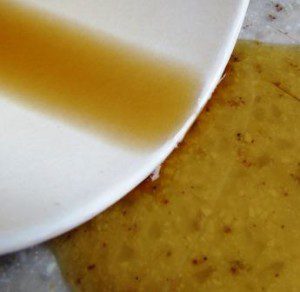
The McDonald’s hot coffee case lives in legend, standing to many as an example of ‘frivolous’ law suits. Yet those who hold such opinions have never let the actual facts stand in the way of their attack on the case and the civil justice system.
The truth about the McDonald’s hot coffee case shows textbook negligence.
The Truth About the McDonald’s Hot Coffee Case: The Facts
On February 27, 1992 79 year-old-Stella Liebeck was driven to a local Albuquerque, New Mexico McDonald’s by her grandson. She sat in the front passenger seat. She ordered and received a coffee, served in a Styrofoam cup. Her grandson pulled forward and parked, allowing her to add cream and sugar to the coffee.
When she peeled up the lid, scalding coffee, the entire cup, spilled. Her sweatpants absorbed the liquid, transmitting the scalding liquid to body parts including inner thighs and vagina, causing third degree burns over 6% of her body. A third degree burn is referred to as a full thickness burn, destroying the outer epidermis and the entire layer below.
Eleven days of hospital treatment included skin grafting and debridement.
McDonald’s had a Chance to Settle
Liebeck offered to settle if McDonalds would pay $20,000, the cost of actual medical bills and estimates for further treatment. McDonald’s refused.
During the ensuing lawsuit, McDonald’s revealed that a consultant recommended holding coffee at between 180 and 190 degrees Fahrenheit to maintain optimum taste. The same expert admitted never having considered safety ramifications of serving liquid at this temperature.
A thermodynamics scholar testified on behalf of Mrs. Liebeck that liquid at 180 degrees will cause a full thickness human skin burn in only 2 to 7 seconds. Other testimony indicated that as the liquid temperature decreases, the extent of the burn decreases quickly. Coffee at 155 degrees would likely not have caused a severe burn.
McDonald’s Own Testimony
McDonalds own quality assurance manager testified that company policy required coffee to be held at 185 degrees, plus or minus five degrees, and that coffee at that temperature was not fit for human consumption, posing a severe burn risk. McDonalds own expert, acknowledging the risk, testified that the company had no intention of reducing the coffee holding temperature.
Further, McDonald’s research indicated that it knew customers intend consume the coffee immediately after the drive through purchase. But no change in policy of coffee holding temperature was made. A turning point for jurors came when testimony indicated that during the prior 10 years there were 700 reports of people burned by McDonald’s coffee from first degree to third degree burns.
A McDonald’s safety consultant testified that 700, based on all the coffee sold by the chain was “statistically no different from zero.”
Judgment
The jury awarded Mrs. Liebeck $200,000 in compensatory damages, reduced to $160,000 because she was found 20% at fault.
The jury also awarded punitive damages of $2.7 million, the amount McDonald’s makes in coffee sales in two days.
Punitive damages were later reduced to $480,000, even though the trial court judge found McDonald’s conduct reckless, callous and willful.
But, the final result came when the parties reached a private settlement in order to avoid lengthy appeals.
The Truth About the McDonald’s Hot Coffee Case: Today
Why do I post this years after the controversial case? I’m not the only attorney approached by those claiming “if that lady could sue McDonald’s for nothing and make millions …”.
The McDonalds hot coffee case represents classic negligence. Placing food in the chain of commerce, the restaurant has a duty, which it breached, when in callous disregard of known risks presented by serving scalding liquid, it failed to take reasonable precautions of lowering the temperatures even slightly to industry standards. Even the conservative, staid Wall Street Journal said McDonald’s callousness was the issue.
Final judgment before the secret settlement was $640,000, far short of the “multimillion dollar” amount still discussed by some to this day.
Far from a runaway verdict, this case stands for runaway callousness and risk taking by one corporation.
The truth about the McDonald’s hot coffee case is documented in a Connecticut Bar Association pamphlet written with assistance from the trial judge: Click Here.
An award winning movie documents the case beyond the headlines that polluted public opinion: Click Here.
Views: 128





I appreciate the breakdown of this case.
I just came across a comment on fb referring to the McDonald’s hot coffee case as an example of frivolous lawsuits and I had to look it up remembering that the facts make it not at all frivolous. Hopefully I taught that person something.
Thank you for letting me know.